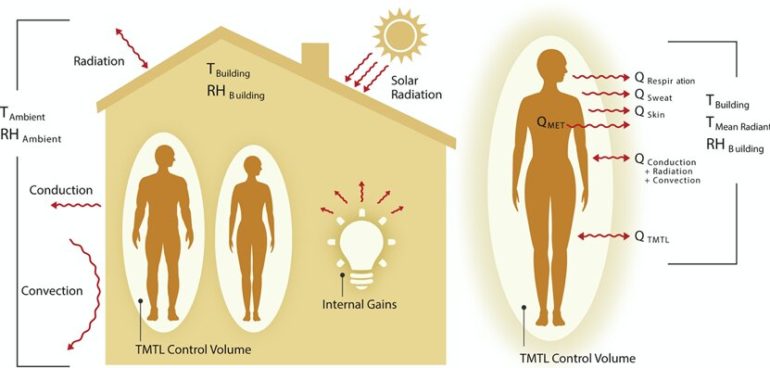Heating and cooling buildings is a large part of global energy demand and a significant source of CO2 and greenhouse gas emissions, and in the coming decades the energy demand for heating and cooling—also known as thermal energy—is expected to grow considerably. Scientists and engineers have made many advances in lowering building energy demand by improving energy efficiency in building technologies and reducing energy loss through the building walls and windows.
Now, researchers are concerned that simply tackling the problem through energy-efficient technology and design will reach its practical limits. So researchers from Lawrence Berkeley National Laboratory (Berkeley Lab), the National Renewable Energy Laboratory, and UC Berkeley have pioneered a new framework that determines the minimum thermal energy required to keep building occupants comfortable.
In a study recently published in the journal Joule they make the case for calculating the theoretical minimum thermal load in order to dramatically lower the energy required for heating and cooling buildings.
“Our work shows that current thermal loads in buildings are more than an order-of-magnitude higher than the theoretical minimum thermal load,” said Ravi Prasher, Berkeley Lab’s Associate Lab Director for Energy Technologies and the corresponding author of the paper. “In fact, the theoretical minimum thermal load showed that in residential buildings the energy used for heating or cooling an entire building for occupant comfort could be between 19 to 40 times lower.”
The theoretical minimum thermal load does not calculate the amount of heating or cooling that would be needed to make an uncomfortable space comfortable, but rather it sets up a new baseline for occupant comfort with different building parameters. By calculating this baseline, the researchers are identifying the physical limit for reduced thermal energy use, that is, the point at which further reduction in thermal energy would cause occupant discomfort.
Study outlines five thermal energy grand challenges for decarbonization
More information:
Chuck Booten et al. Theoretical Minimum Thermal Load in Buildings, Joule (2021). DOI: 10.1016/j.joule.2020.12.015
Provided by
Lawrence Berkeley National Laboratory
Citation:
Pioneering framework could reduce energy demand in buildings (2021, February 2)
retrieved 2 February 2021
from https://techxplore.com/news/2021-02-framework-energy-demand.html
This document is subject to copyright. Apart from any fair dealing for the purpose of private study or research, no
part may be reproduced without the written permission. The content is provided for information purposes only.



